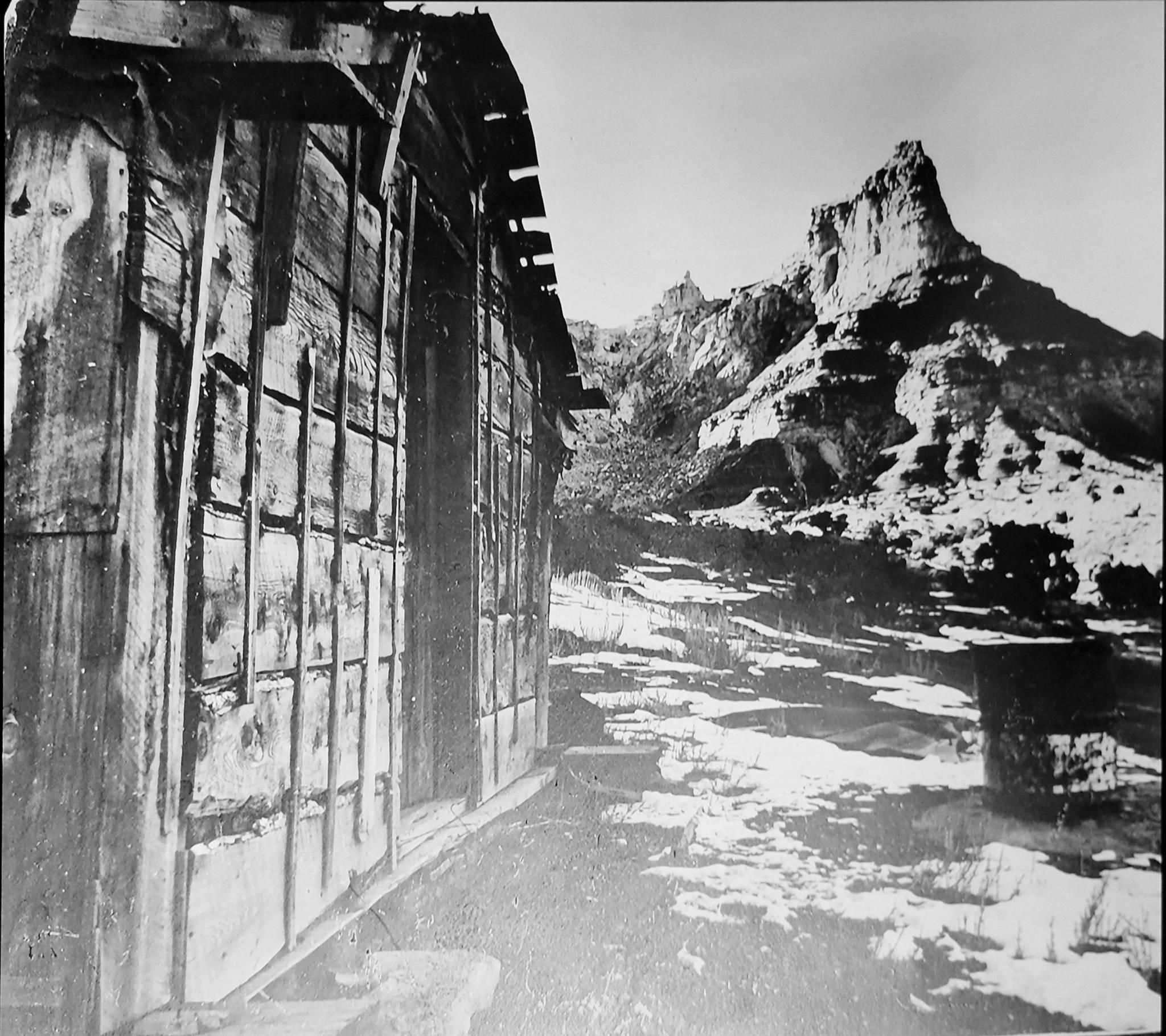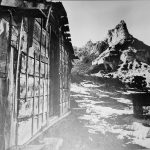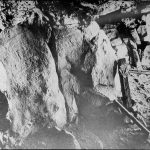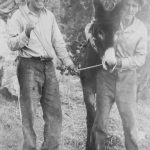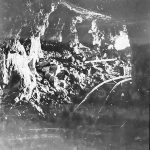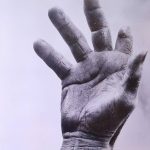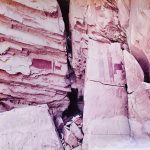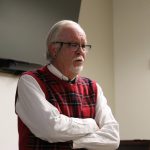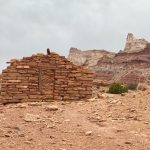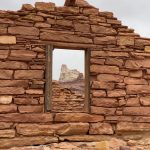Craig Evan Royce, author of Uranium Seekers, presented on the history of Temple Mountain on Oct. 30 during the Carbon County Historical Society’s final meeting of the year.
Royce, originally from California, now a resident of East Carbon and educator at Pinnacle Canyon Academy, has been deeply involved with archaeology and paleontology since the 1970s, contributing to organizations and writing several books.
He began his academic journey in the mid-1960s, moving from California to Lexington, Kentucky, where he earned his bachelor’s degree while immersing himself in the region’s history. After graduating, he returned to California and opened a gallery showcasing art from the Southern Highlands. It was during this time that he met Brenda Migliaccio-Kalatzes in Laguna Beach, California.
Migliaccio-Kalatzes, a professional dancer and dance educator, approached Royce with the idea of writing a book about her father, Lawrence Migliaccio. Royce recalled that when Migliaccio-Kalatzes first pitched the project, she described owning “the most beautiful mountain in the world,” referring to Temple Mountain. This collaboration led to the creation of Uranium Seekers.
Uranium Seekers, a photo-essay tribute to miners, Royce began in 1976, alongside world-famous Hollywood photographer Martin Szipál, aiming to document the people and history behind Temple Mountain while paying tribute to the positive effects of Uranium.
“This book was dedicated to all miners from Crandall Canyon to Upper Big Branch, West Virginia and on to China, miners who now lay eternally entombed, where standing within their portal,” shared Royce.
Temple Mountain, located nearly 40-miles south of Green River, Utah, is nestled on the west side of the reef in the San Rafael Swell. The white mountain stands out along the red desert landscape, sitting at 6,280 feet elevation, the highest peak in the San Rafael desert. While today, the Temple Mountain area is very active among rock climbers, hikers and off-road explorers, the mountain contains an interesting portion of Utah history.
“Temple Mountain is not just a day in the sun or a trip to Goblin Valley,” said Royce.
The areas surrounding Temple Mountain are now a popular weekend getaway for outdoor enthusiasts, but this desolate landscape was once home to the early inhabitants of the San Rafael Swell. Many canyon walls in the region still bear evidence of these ancient civilizations, dating back thousands of years. The area was originally inhabited by the Archaic people, who survived as hunters and gatherers. Over time, they evolved into the Fremont culture and began farming the desert regions. Petroglyphs and pictographs are common in this area, offering a glimpse into the life of those who once lived there.
However, Temple Mountain really gained attention in the early 1900s, around the same time that Madam Marie Curie, physicist, chemist, and Noble Prize winner, discovered the radioactive elements, radium and polonium, alongside her husband Pierre Currie.
Pierre tragedy passed away in 1906 in a street accident involving a horse-drawn cart. However, Mme. Curie continued their research, calling for all available uranium to be used for further exploration.
According to Royce’s book, in 1904, geologist J.M. Boutwell was informed by sheepherders searching for water in Wildhorse Canyon near Temple Mountain about the discovery of “considerable deposits of black, vanadiferous sandstone and some carnotite float.” After processing, it was determined that the sample contained uranium, as well as vanadium—a vital component used in steel for tanks and battleships.
In 1913, the search for the atom was initiated by the American Scientific Society, along with government, medical and business organizations, under the direction of the National Radium Institute. The goal was to develop the potential of radium and share its benefits globally, according to Royce. However, by 1917, the National Radium Institute had obtained enough radium for widespread medical and scientific use and subsequently disbanded, ending a brief but significant humanitarian effort in the United States.
From 1924 until early 1934, the market for uranium ore collapsed. In 1941, after Japan attacked the United States, the country entered World War II and established a corporation to procure as much vanadium as possible. By late 1944, the U.S. government found itself in need of large quantities of high-grade uranium ore for the atomic bomb project.
By this time, Migliaccio had uncovered several rich uranium deposits on Temple Mountain. The ore was hand-drilled and carried down the mountain to mules at the base.
When the atomic bomb was dropped and the war ended, Migliaccio and other uranium miners were left to fend for themselves, as the government lost interest in further developing uranium ore. Despite this, Migliaccio continued to mine and develop the north side of Temple Mountain.
In Uranium Seekers, Royce continues telling the story of the Migliaccio and goes into the glimpse of the life after the uranium boom. To read more about the rise and fall of Temple Mountain, you can purchase Uranium Seekers at the USU Eastern Prehistoric Museum, the Helper Museum or order it online by clicking here.
- Miners Cabin 1976
- Tracks find daylight 1976
- Lawrence Migliaccio, Sally the Mule and Camp Cook Tom Watkins, 1940s
- Tracks inside Uranium Mine
- Hand of working man, Frank Migliaccio
- Pictographs near Temple Mountain
- Craig Royce
- Present day Temple Mountain
- Temple Mountain through the window of the miner’s cabin

